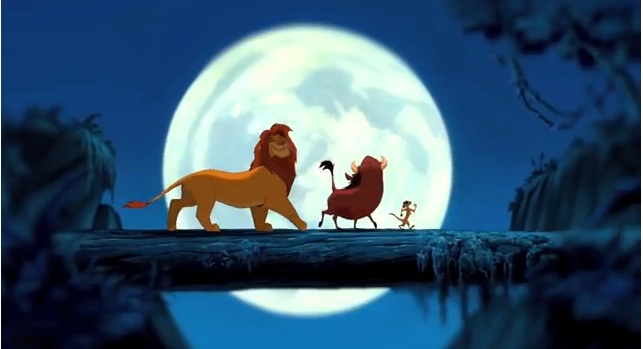The Lion King Rereleased in 3-D: One Dimension Too Many?
A Look at the Workings (and Non-Workings) of 3-D
September 18, 2011
This weekend, Disney’s “The Lion King” returned to theaters for a two-week 3-D engagement. This release is the latest in a small trend of 3-D reissues that began five years ago with Disney’s reissue of “The Nightmare Before Christmas.” Beloved films that have not been seen in theaters for years are being converted into 3-D prints for theatrical exhibition. While this is still an evolving practice, one should consider whether it should be happening at all. Are 3-D reissues spoiling classic movies, or are they a modern outlet for seeing notable older films in theaters again?
The short answer is no, the 3-D reissues aren’t spoiling the classics, but they come with reservations. 3-D itself is problematic but not worthless. It can either increase your connection to the world of the film (like in “Avatar” or “How to Train Your Dragon”), or it can ruin the experience if it is done incompetently (like in “Thor”). Despite its problems, I don’t see it as enough of a detriment to overcome my love for seeing classic films in their intended venue. 3-D may be a useful way to bring movies back in theaters since it currently has the movie industry’s attention, but this practice needs to be taken on a case-by-case basis. Studios should be careful to choose movies for which the conversion will be less faulty.
An apt comparison is between the 3-D versions of “The Lion King” and “The Nightmare Before Christmas.” “The Lion King” is the first hand-drawn animated film I’ve seen in digital 3-D, and the result was not entirely worth the cost. Some scenes with layered environments benefitted from the 3-D, displaying a depth akin to the multi-plane shots in “Pinocchio.” The characters themselves are a different story. The 3-D technicians often took one appendage on a character’s body, like a snout or a wing, and stretched it out for the effect. Most of the character appears flat while part of his front will jut out at you quite noticeably.
“Nightmare,” which has played in theaters each October since 2006, was a more successful conversion. It’s a stop-motion animated film, meaning it already looks three-dimensional. Adding 3-D effects to this film did not radically change the picture. It expanded the depth in the visuals and made Halloweentown look like a physical location. The technicians who worked on “Nightmare” based their work on the film’s design, which produced a more natural and convincing result than the virtual pop-up book “The Lion King” has become.
As “The Lion King” and “Nightmare” demonstrate, 3-D works best with certain kinds of movies. First, I’d suggest movie studios refrain from converting any more hand-drawn animated features. The effect works on films that appear to have dimension, not on films intended to look like moving paintings. Second, studios should choose movies that justify being in 3-D. This spring will see the 3-D release of “Titanic” and “Star Wars: Episode I – The Phantom Menace,” special effects films whose large scope would benefit more from this technology than a more intimate drama like, say, “No Country for Old Men.”
Third, studios should stick with relatively recent movies for technical and personal reasons. I don’t pretend to know how 3-D effects are produced, but I expect they are easier to do on movies whose visual components were completed digitally, like “The Lion King” and “The Phantom Menace.” If studios tried converting movies like “Jaws” or “Ben-Hur,” 3-D would probably look too phony because it would be adding digital effects to movies made entirely on ordinary film. Besides, if anyone complained when the 3-D “Lion King” was announced, imagine how incensed citizens would become over a 3-D “Wizard of Oz.” This is all speculation of course, but I don’t think converting films that old and that beloved would be worth the investment.
But when 3-D works in a rerelease, it works pretty well, as in the case of “The Nightmare Before Christmas.” It is a kitschy alternate to the two-dimensional original, rather like seeing a sing-along version of “The Sound of Music.” Some people see it as tainting movies they cherish, but 3-D does not really taint as long as the 2-D version is readily available on DVD. (It would be great if both versions played in theaters, but beggars can’t be choosers.) Movies were made to be seen in a theater, and if 3-D is the way studios bring them back, then it’s fine by me as long as studios act within reason.












